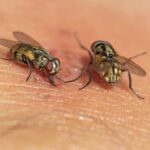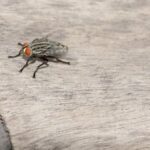How Do Flies Change Direction So Quickly?
If you’ve ever seen a fly flying through the air, you’ve probably wondered: How do they change direction so quickly? They actually do it much faster than you might think. The way they change direction depends on their biomechanics. Flies use torque to perform evasive turns and can execute banked turns at up to five times the speed of regular flight.
Flies are able to change direction in less than 20 milliseconds, allowing them to turn away from perceived predators in an instant. They do this by yawing, pitching, and rolling. This ability allows them to change their flight path rapidly and maneuver away from threats, so much so that they can even detect the presence of a threat.
Flies have fast visual responses because their eyes are made of string-like structures that react mechanically to light. In comparison, vertebrates have long tube-like cells facing light that react chemically to it. This is why fly eyes are so sensitive to light, and they react faster than vertebrates.
In order to study the mechanism of how flies change direction, researchers sliced through the thoraxes of flies and filmed their movements. They found that different cuts interfered with the transmission. Another way to see how flies change direction quickly is by examining the movement of flies using a high-speed camera.








